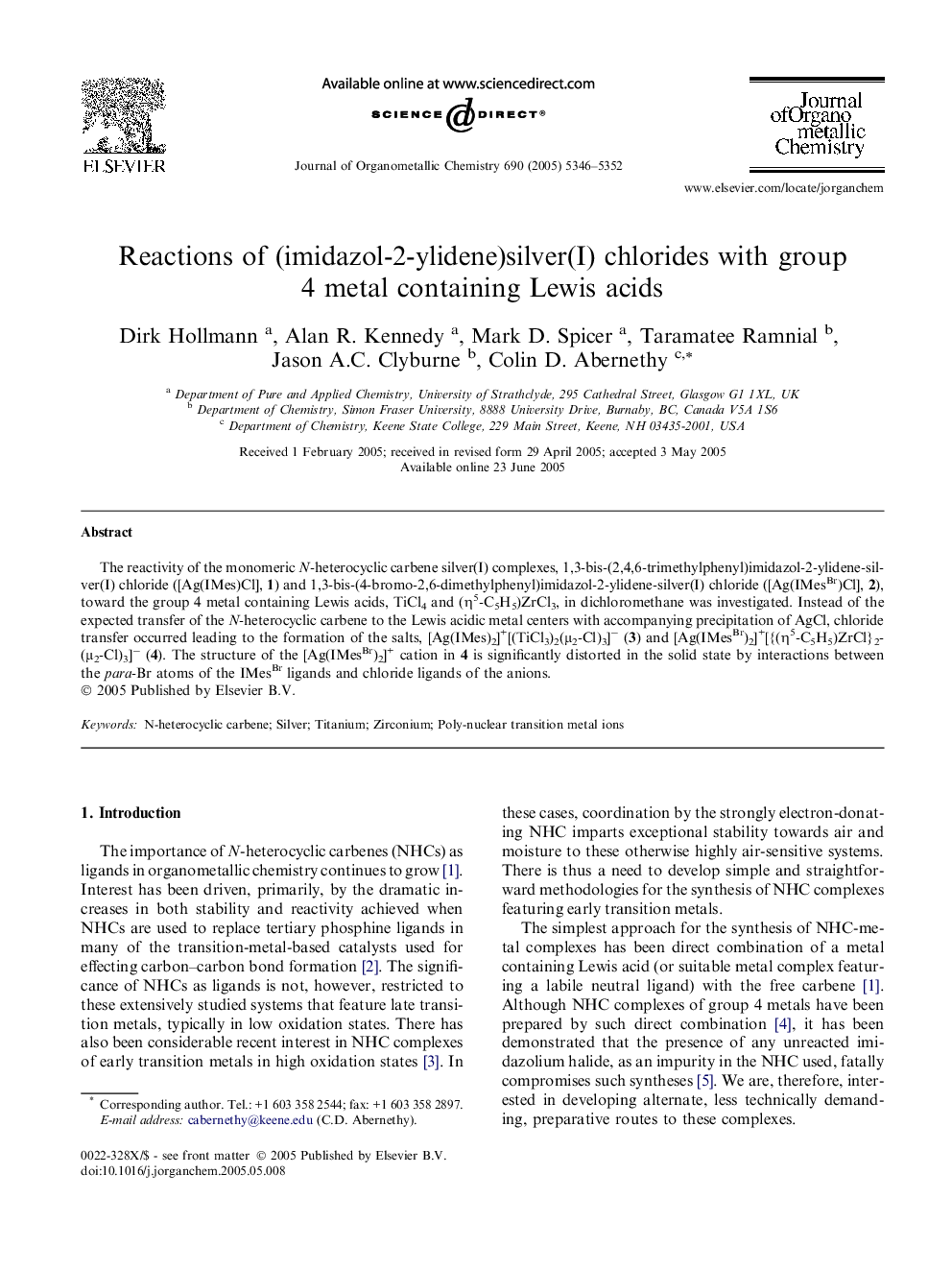| Article ID | Journal | Published Year | Pages | File Type |
|---|---|---|---|---|
| 1327252 | Journal of Organometallic Chemistry | 2005 | 7 Pages |
The reactivity of the monomeric N-heterocyclic carbene silver(I) complexes, 1,3-bis-(2,4,6-trimethylphenyl)imidazol-2-ylidene-silver(I) chloride ([Ag(IMes)Cl], 1) and 1,3-bis-(4-bromo-2,6-dimethylphenyl)imidazol-2-ylidene-silver(I) chloride ([Ag(IMesBr)Cl], 2), toward the group 4 metal containing Lewis acids, TiCl4 and (η5-C5H5)ZrCl3, in dichloromethane was investigated. Instead of the expected transfer of the N-heterocyclic carbene to the Lewis acidic metal centers with accompanying precipitation of AgCl, chloride transfer occurred leading to the formation of the salts, [Ag(IMes)2]+[(TiCl3)2(μ2-Cl)3]− (3) and [Ag(IMesBr)2]+[{(η5-C5H5)ZrCl}2(μ2-Cl)3]− (4). The structure of the [Ag(IMesBr)2]+ cation in 4 is significantly distorted in the solid state by interactions between the para-Br atoms of the IMesBr ligands and chloride ligands of the anions.
Graphical abstractThe reaction of the N-heterocyclic carbene silver(I) chloride complexes, 1,3-bis-(2,4,6-trimethylphenyl)imidazol-2-ylidene silver(I) chloride ([Ag(IMes)Cl], 1) and 1,3-bis-(4-bromo-2,6-dimethylphenyl)imidazol-2-ylidene silver(I) chloride ([Ag(IMesBr)Cl], 2), with the Lewis acidic group 4 transition metal containing compounds, TiCl4 and (η5-C5H5)ZrCl3, resulted in the formation of the salts [Ag(IMes)2]+[(TiCl3)2(μ2-Cl)3]− (3) and [Ag(IMesBr)2]+[{(η5-C5H5)ZrCl}2(μ2-Cl)3]− (4).Figure optionsDownload full-size imageDownload as PowerPoint slide
